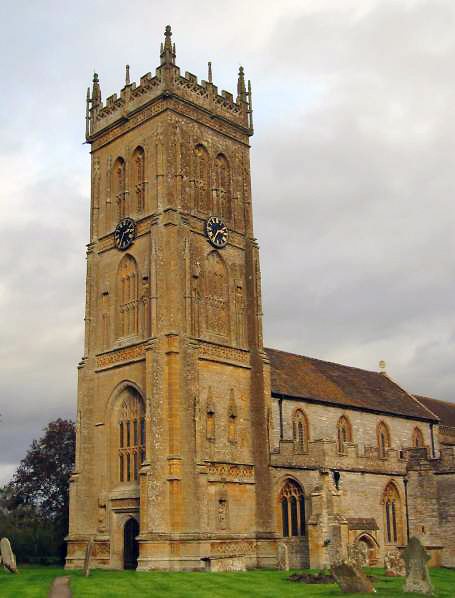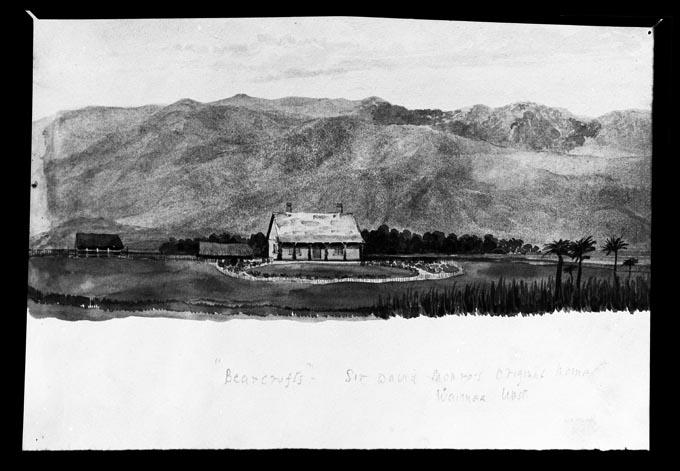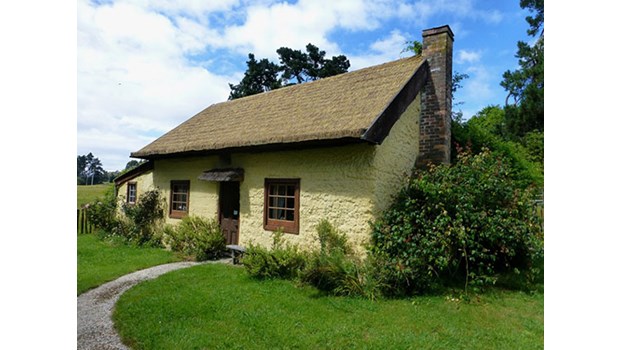The Kingsbury Trail to Nelson
Sixty-five (6%) of the emigrants from Kingsbury Episcopi (Somerset, England) went to New Zealand, a much lower number than those who went to Australia in the same time frame.
Sixty-five (6%) of the emigrants from Kingsbury Episcopi (Somerset, England) went to New Zealand, a much lower number than those who went to Australia in the same time frame. But what is interesting about this movement is the concentration of people who went to the Nelson area of the South Island, the early dates of settlement and how many of the families were related or intimately connected in some way.
The agents, especially George Murley in Langport, were responsible for encouraging much of this early settlement on behalf of the New Zealand Company. The first known ship to carry 11 Kingsbury Episcopi migrants was the Sir Charles Forbes which sailed from London to Nelson, arriving on 22 August 1842. William Satherley, his wife Caroline and one-year-old son James had a particularly bad voyage. Caroline was pregnant and their daughter Elizabeth was premature and died the same day she was born, 10 August 1842. Caroline died seven days later from tuberculosis and complications from the birth, just five days before the ship docked in Nelson. William married again two years later and had a further six children. He arrived as a labourer before acquiring land, presumably for farming, in Lower Moutere by 1869.1
Best Family
The second family was Charles Best, his wife Ann Withey and baby son Daniel. Charles’ first job was as a sawyer and he saved enough from wages paid by the New Zealand Company to rent and later buy a section and purchase two steers and a cow calf. Years later Ann described what happened when the New Zealand Company went bankrupt in 1843. “Our little heifer calved soon after that crash, and she made 12 ¼ lbs of butter a week. We sold the 12lbs and kept the quarter for ourselves; and so we were able to pay our rent without selling the steers, which were getting so handy in the plough. I drove the bullocks for Charles, or helped him clear the flax from the land or cut the rods for the fence all day, and then we both came in and did the cooking and housework at night. But, in the following year, we had fifty bushels of wheat to the acre, so that we paid for our fifty acres and agreed to buy three more sections.”
The family went on to farm successfully and the couple had a further seven children. Unfortunately, their son Daniel drowned in the Appleby River in 1844. This family was known as the Appleby Bests. Charles sponsored his brother William and three children in 1856 and they travelled on the Cresswell.2 This branch was known as the Moutere Bests.
The family of Job Best who travelled with Charles on the Sir Charles Forbes became known as the Stoke Bests and although they were probably related it was only distantly. With Job was his wife Eliza Jane Poole. Their early months are detailed in a letter Job wrote home on Christmas Day 1842. “We had the first fortnight rough in the English Channel. Eliza, and Charles Best were very sick for a long time, the rest were not so bad… The land is not yet cultivated excepting the town acres… The things which are growing in the garden are also looking well; such as potatoes, peas, beans, and wheat… At present the work is very scarce, but hitherto we have not wanted for employment, and we are much better off than the poor people in England. How foolish the people are to fear the water… If George and James come out, they had better come the same time that we did, and bring their working tools with them.” Job like the others became a farmer and was heavily involved in the Methodist Church. They had 11 children.
Russ and Satherley
The last couple on the Sir Charles Forbes were Job Russ and Elizabeth Satherley who were also married shortly before leaving Kingsbury Episcopi. Elizabeth was the sister of William. He built a hut in Waimea West, and commenced farming, but was flooded out, and moved to Appleby. He endured many of the hardships and privations of the early settlers, and at one time had to dig up his seed potatoes for food. Despite early hardships the family did well and in 1878 they bought Bearcroft at Waimea West, a substantial property and later the home of David Monro.3 Unfortunately, Elizabeth fell while moving furniture into their new home and died.
Jacob Gifford was 51 when he emigrated, much older than the average. He and his wife Mary Clark and their eight children sailed on the Thomas Sparks and landed in Nelson on 26 February 1843. Like the others he suffered hardships in the early days but converted land into a model farm named Rodwell at Spring Creek in Marlborough.
The failure of the New Zealand Company and the difficulties of tilling new and unknown land caused severe hardships in the early years and emigration to this area slowed to a trickle. The Cresswell docked in Nelson on 6 October 1856 carrying individuals all related to the earlier settlers. They included George Harvey, his wife Cornelia Withey and two young daughters: Mary Ann and Rhoda Ann. Cornelia was the sister of Ann Withey and George initially worked for his brother-in-law, Charles Best. The family built a cob cottage for their expanding family and named it Somerset Cottage. This building still stands today and has been restored by the Historic Places Trust.
Also on the boat was William Best, the younger brother of Charles. who had been widowed in 1850. Records indicate that his brother Charles sponsored William and three children, however the passenger list only indicates that William was accompanied by his son Thomas, aged eight, but no record of daughter Elizabeth or another child.
Later Arrivals
The late 1850s saw more migration but individuals were often related to those already in Nelson as word of improved conditions got back to family in letters home. The John Mastermann landed on 8 February 1857 with two families. Job Russ’s father Jonah, who had been widowed in 1845 travelled with two sons Esau and Jacob. Esau was murdered during a fight in 18614 but Jacob married Margaret Besgrove who arrived two years later. The other family was Mary Reed, the mother of Elizabeth and William Satherley. Mary had been widowed in 1843 and she traveled with four grandchildren, including William (17), John (14) and Thomas (8). Their mother Sarah was still alive but she married in 1859 and stayed in Kingsbury Episcopi. The fourth grandchild was Eliza Satherley (21), the daughter of her son Levi.
Two years later the Queen of the Avon docked on 29 July 1859. This ship carried Margaret Besgrove (mentioned above) and her two year-old son William. Margaret married Jacob Russ a month after her arrival in Nelson. William later took the name of Russ and the couple went on to have five more children. On the same boat was George Satherley, his wife Harriett Martin and son Henry, aged four. Three other children were born in Kingsbury Episcopi but died as infants between 1857 and 1859. Another son Edwin was born on 27 July 1859 just days before docking and he survived. George’s mother was Mary Reed who traveled on the John Mastermann two years earlier.
Tragic Drowning
Henry (Harry) Satherley (mentioned above) became the subject of an incident in 1897. On 9 July 1897 he did the rounds of a few hotels in Blenheim, and at some stage he procured a large sum of money. Harry was unsteady on his feet and may have fallen into the river. The incident became known as the Satherley Mystery and many articles were written in the newspapers of the day5 and a more recent book. He was missing for weeks and it caused a sensation. He was not known as a heavy drinker, and had the reputation of being an honest and respectable man. He was a successful horse trainer, some of the best racers in this area, including Sing Song, having passed through his hands. When his body was eventually found, the post mortem revealed he was alive when he entered the water. It was later determined he committed suicide, although there were a couple of false confessions, men tempted by the reward and offer of free pardon, and suspicion remained that he was murdered.
There is an example of an individual who went first to Australia and then moved on to New Zealand. James Nevill arrived in Melbourne on 11 March 1857 but less than four years later he sailed to New Zealand to join the gold rush to Gabriels Gully in Otago. He travelled around the Otago goldfields as a miner, later buying land and farming at Moa Creek in Central Otago.
Migration to New Zealand continued but at a much slower place. Later arrivals from the village were not always related to the earlier arrivals and after 1872 they settled in other parts of New Zealand. The most common names to settle in Nelson were Satherley (12), Gifford (11), Best (6), Withey (6) and Russ (5). Their names continue to live on in the Nelson area to this day.
2021. First published in "The Greenwood Tree" 46(1) March 2021 - Journal of the Somerset and Dorset Family History Society.
Note - Janet lot more detail on the individuals mentioned in this article and the others who went to Australia. Janet can be contacted at jelute@princeton.edu. For more historical information about Kingsbury Episcopi: https://www.kingsburytimetravellers.org.uk/emmigration/
Story by: Janet Lute
Sources
- Advertisements (1869, June 18) Colonist, p.4
https://paperspast.natlib.govt.nz/newspapers/TC18690618.2.37.1 - Shipping intelligence (1856, October 8) Nelson Examiner and New Zealand Chronicle, p.2
https://paperspast.natlib.govt.nz/newspapers/NENZC18561008.2.3 - The Cyclopedia of New Zealand [Nelson, Marlborough & Westland Provincial Districts] (1906), p.129, Retrieved from NZETC:
https://nzetc.victoria.ac.nz/tm/scholarly/tei-Cyc05Cycl-t1-body1-d1-d2-d4.html - Manslaughter at Waimea West (1861, November 5) Colonist, p.2
https://paperspast.natlib.govt.nz/newspapers/TC18611105.2.8 - The Satherley mystery at Blenheim (1857, July 21) Nelson Evening Mail, p.2 https://paperspast.natlib.govt.nz/newspapers/NEM18970721.2.18; The Satherley mystery. (1857, September 21) The Colonist, p.4: https://paperspast.natlib.govt.nz/newspapers/TC18970921.2.12.4; Theory of suicide. (1897, December 4) Nelson Evening Mail, p.3: https://paperspast.natlib.govt.nz/newspapers/NEM18971204.2.22.3.1
Further Sources
Newspapers
- Century-old Marlborough murder mystery explored in new book (2016, February 4) Marlborough Express on Stuff:
https://www.stuff.co.nz/national/crime/76527504/century-old-marlborough-murder-mystery-explored-in-new-book
Websites
- Somerset Farm Settlers Cottage. Heritage New Zealand listing:
https://www.heritage.org.nz/the-list/details/5153 - Kingsbury Episcopi Time Travellers. Retrieved December 2022:
https://www.kingsburytimetravellers.org.uk/emmigration/


